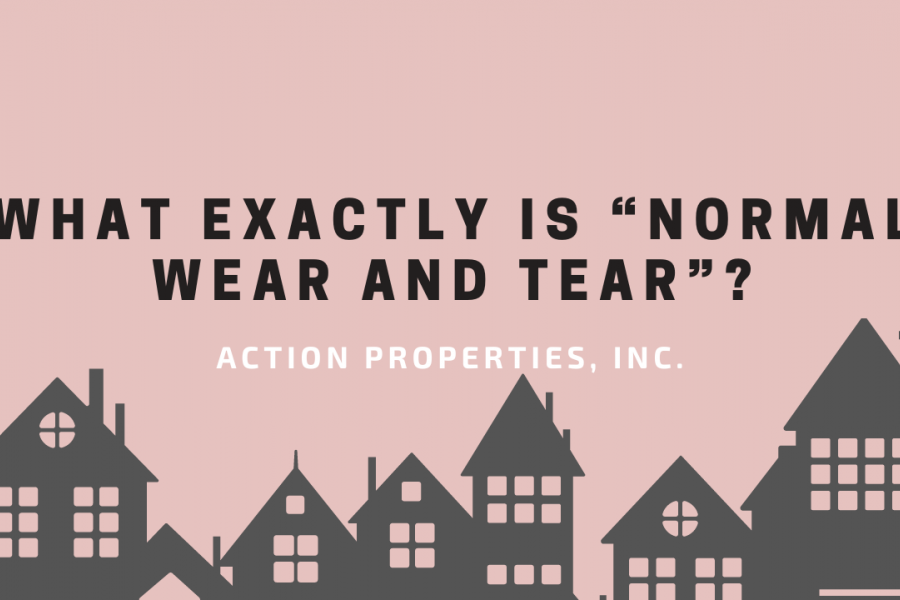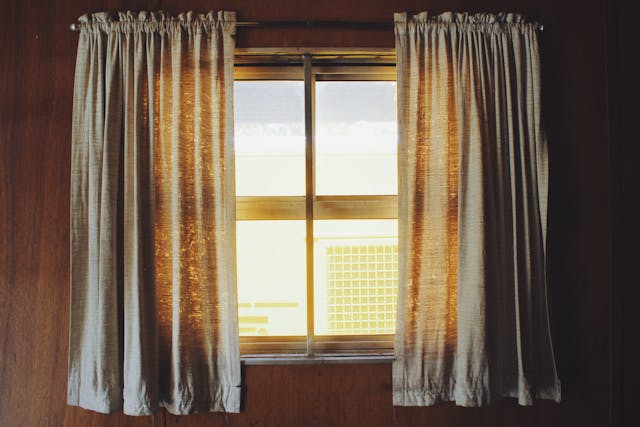
What exactly constitutes "normal wear and tear" in rental properties? As landlords, navigating the nuances of property management can sometimes feel like deciphering a cryptic code. Fear not, fellow property aficionados, for clarity is on the horizon!
In this article, we'll embark on a journey to demystify this elusive concept, shedding light on what constitutes ordinary wear and tear versus tenant-inflicted damage. So, grab your magnifying glass and join me in unraveling this enigma, because understanding normal wear and tear is key to maintaining harmony in the realm of landlord-tenant relations.
Deciphering Normal Wear and Tear
For landlords, normal wear and tear encompasses a range of expected changes to a property over time, including:
- Minor Wall Scuffs: Light marks or scuffs on walls from everyday use.
- Carpet Wear: Gradual thinning or fading of carpet in high-traffic areas.
- Faded Paint: Natural fading or minor discoloration of paint over time.
- Worn Flooring: Normal wear on hardwood, vinyl, or tile floors from regular foot traffic.
- Appliance Degradation: Reasonable wear on appliances due to normal use, such as slight scratches or dents.
- Loose Door Handles: Normal loosening of door handles or hinges from regular operation.
- Faded Window Treatments: Gradual fading or minor fraying of curtains or blinds.
- Landscaping Changes: Expected changes to landscaping, such as minor patchy grass or shrub trimming.
Remember, normal wear and tear does not include damage caused by negligence, misuse, or abuse by tenants.

Identifying Damages Beyond Normal Wear and Tear
Unexpected damages to rental properties for landlords may include:
- Holes in Walls: Punching or drilling holes beyond normal wear and tear.
- Stains on Carpet or Flooring: Significant spills or stains that require professional cleaning or replacement.
- Broken Fixtures: Damage to fixtures like light fixtures, faucets, or door handles beyond normal wear.
- Cracked Tiles or Flooring: Damage resulting from impact or heavy items dropped on floors.
- Pet Damage: Scratches, stains, or odors caused by pets beyond normal wear and tear.
- Water Damage: Leaks or water damage from neglecting plumbing issues.
- Mold or Mildew: Failure to address moisture issues leading to mold or mildew growth.
- Broken Windows or Doors: Damage resulting from accidents, break-ins, or vandalism.
- Excessive Filth or Neglect: Severe neglect or unsanitary conditions requiring extensive cleaning or repair.
- Unauthorized Alterations: Modifications made by tenants without permission that cause damage or alter the property's structure.
Being vigilant and conducting regular inspections can help identify and address these unexpected damages promptly.
Proactive Preservation: Preventive Maintenance Tactics for Landlords
Preventive maintenance is key for landlords to minimize wear and tear on their rental properties. Here are some effective strategies:
Regular Inspections
Scheduled inspections are crucial for landlords to catch potential issues before they escalate. Conducting inspections at regular intervals, such as quarterly or bi-annually, allows landlords to identify maintenance needs early on.

During these inspections, landlords can check for signs of wear and tear, assess the condition of appliances and fixtures, inspect for leaks or water damage, and ensure that safety features like smoke detectors and carbon monoxide detectors are in working order. By staying proactive with inspections, landlords can address maintenance issues promptly, preventing them from becoming costly repairs later on.
Tenant Education
Educating tenants about property care and maintenance expectations sets the foundation for a successful landlord-tenant relationship. Provide tenants with a comprehensive guide or checklist outlining their responsibilities for property upkeep, including tasks such as regular cleaning, proper disposal of trash and recycling, and reporting any maintenance issues promptly.
Clear communication about expectations helps tenants understand their role in maintaining the property's condition and encourages them to take proactive steps to prevent excessive wear and tear. Additionally, landlords can offer tips and resources for tenants to address common maintenance tasks effectively.
Seasonal Maintenance
Seasonal maintenance is essential for keeping rental properties in optimal condition throughout the year. Create a seasonal maintenance checklist that outlines tasks to be completed during each season, such as inspecting and cleaning gutters in the fall, servicing the HVAC system before the start of summer and winter, and addressing lawn care and landscaping needs as the seasons change.
By staying proactive with seasonal maintenance, landlords can address potential issues before they arise, prevent weather-related damage, and ensure that the property remains safe and comfortable for tenants. Regularly scheduled seasonal maintenance also helps landlords stay organized and proactive in managing their properties effectively.

Prompt Repairs
Timely response to maintenance requests is crucial for preventing minor issues from escalating into major problems. Landlords should establish clear communication channels for tenants to report maintenance issues and prioritize responding to these requests promptly.
When a maintenance issue arises, landlords should assess the situation quickly, determine the appropriate course of action, and schedule repairs as soon as possible. Ignoring or delaying repairs can lead to further damage and inconvenience for tenants, ultimately increasing repair costs and potentially affecting tenant satisfaction.
Preventative Repairs
Proactively replacing or repairing items that show signs of wear and tear before they become major issues is essential for maintaining rental properties. Landlords should conduct regular inspections to identify areas of the property that may require preventative repairs, such as replacing worn-out carpeting, updating outdated appliances, or repairing deteriorating fixtures.
By addressing these issues proactively, landlords can extend the lifespan of property components, prevent costly repairs or replacements down the line, and maintain the property's appeal for current and prospective tenants. Investing in preventative repairs can ultimately save landlords time and money in the long run.
Landscaping Maintenance
Proper landscaping maintenance is essential for preserving the curb appeal and overall condition of rental properties. Landlords should develop a landscaping maintenance plan that includes tasks such as mowing the lawn, trimming trees and shrubs, removing weeds, and maintaining flower beds and gardens.

Regularly scheduled landscaping maintenance not only enhances the property's aesthetic appeal but also helps prevent issues such as overgrowth, pest infestations, and water damage. Landlords should consider hiring professional landscapers or providing tenants with guidelines and resources for maintaining the landscaping to ensure it remains in optimal condition year-round.
Bottom Line
In conclusion, understanding the nuances of "Normal Wear and Tear" is essential for landlords to maintain their rental properties effectively. By implementing preventive maintenance strategies and educating tenants, landlords can mitigate damages and prolong the lifespan of their investments.
Action Properties, Inc. is here to support landlords with expert property management services, including regular inspections, prompt repairs, and proactive maintenance planning. With our assistance, landlords can navigate the complexities of property management with confidence and peace of mind.